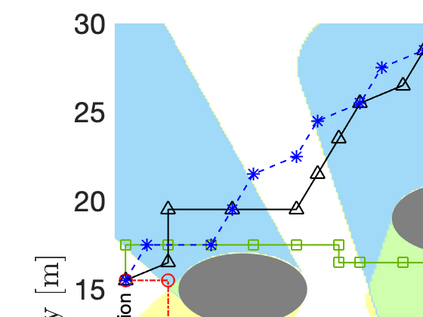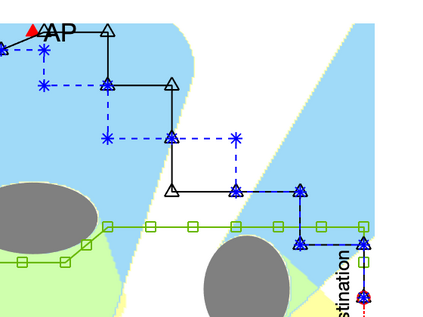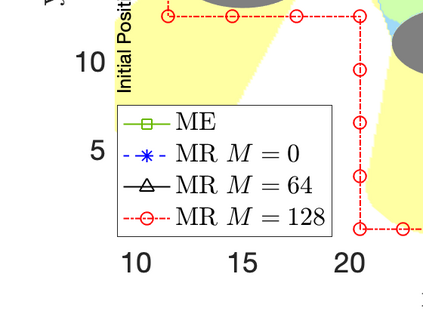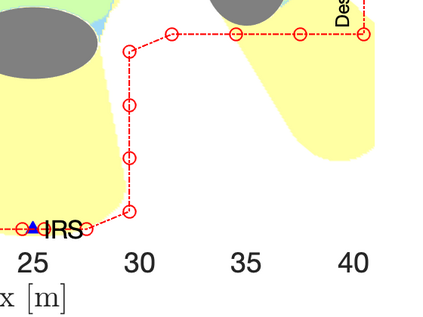This paper considers the motion energy minimization problem for a wirelessly connected robot using millimeter-wave (mm-wave) communications. These are assisted by an intelligent reflective surface (IRS) that enhances the coverage at such high frequencies characterized by high blockage sensitivity. The robot is subject to time and uplink communication quality of service (QoS) constraints. This is a fundamental problem in fully automated factories that characterize Industry 4.0, where robots may have to perform tasks with given deadlines while maximizing the battery autonomy and communication efficiency. To account for the mutual dependence between robot position and communication QoS, we propose a joint optimization of robot trajectory and beamforming at the IRS and access point (AP). We present a solution that first exploits mm-wave channel characteristics to decouple beamforming and trajectory optimization. Then, the latter is solved by a successive-convex optimization-based algorithm. The algorithm takes into account the obstacles' positions and a radio map to avoid collisions and poorly covered areas. We prove that the algorithm can converge to a solution satisfying the Karush-Kuhn-Tucker (KKT) conditions. The simulation results show a dramatic reduction of the motion energy consumption with respect to methods that aim to find maximum-rate trajectories. Moreover, we show how the IRS and the beamforming optimization improve the motion energy efficiency of the robot.
翻译:本文考虑了使用毫米波(毫米波)通信的无线连接机器人的移动能量最小化问题。 由智能反射表面(IRS)协助, 增加高频高频、高阻力敏感度的覆盖面。 机器人受到服务限制的时间和上链接通信质量( QOS) 的限制。 这是完全自动化的工厂的根本问题, 工业4. 0 的特征是, 机器人可能必须在一定的最后期限内执行任务, 同时尽量扩大电池自主和通信效率。 为了说明机器人位置与通信QOS之间的相互依存关系, 我们提议在IRS 和接入点( AP) 联合优化机器人轨迹和成形。 我们提出了一个解决方案, 首先利用毫米波频道特性进行脱色波成形和轨迹优化。 然后, 后者通过连续的电流优化算法来解决。 算法考虑到障碍的位置和无线电地图以避免碰撞和覆盖不足的地区。 我们证明, 算法可以集中到满足Karush- Kuhn- Tuck( KKT) 条件的解决方案。 我们提出了一个解决方案, 我们提出一个解决方案, 首先利用毫米频道的特性特性特性特性, 然后用最优化的方法来显示节制的节制, 我们的节制的节制的节制的节制的节能, 来显示节制的节制的节制的节制的节制的节制的节制的节制。












